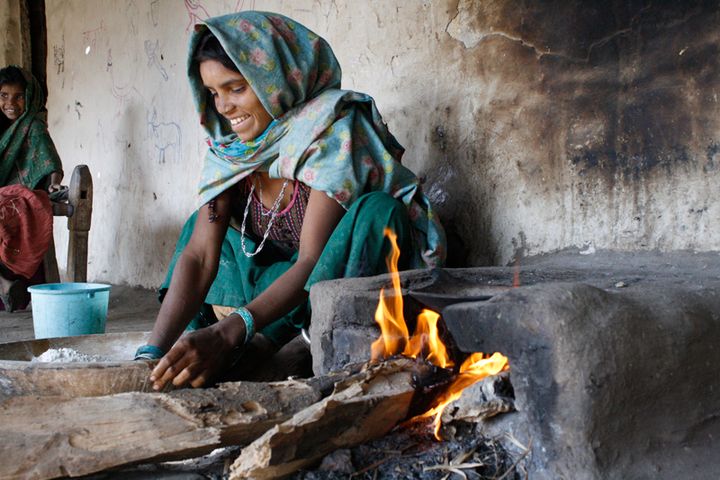Lights On Briefing: Coal India turns to solar, historical weather data and more
What you need to know to start the week

Happy Monday and welcome to today’s Lights On, a newsletter that brings you the key stories and exclusive intel on energy and climate change in South Asia.
In case you stayed offline this weekend, catch up with my weekend read on why regional energy cooperation is vital to achieving a deep energy transition and enable a net zero target.
And if you can, please support this newsletter. If you haven’t done it yet, you can subscribe here. If you already are a subscriber please share this issue widely so it will reach more readers!

Coal giant turns to solar
The world’s largest coal miner, Coal India, plans to close small mines and move towards solar investment, ‘aggressively’ participating in India’s energy auctions and exploring wafer manufacturing, a field still in its infancy in the country. In an interview with Reuters, the company’s chairman Pramod Agarwal said Coal India will team up with state run mining company NLC India to invest $1.73 billion in solar projects with a total capacity of 3GW by 2024. In the three years to 2020, Coal India closed 82 mines and laid off 18,600 employees. Mining jobs are expected to be a major casualty as India transitions toward a less carbon intensive economy.
India’s historical weather data now online
India’s treasure trove of 120 year-old weather data is now available online on the India Meteorological Department (IMD) portal. The Pune based research centre holds the only existing archive of all meteorological data in India since 1900 and still gathers continuous observations. The information is accessible to forecasters, researchers and the general public, and includes “real-time weather data observations, climate extremes and normals, data on monsoon and cyclones, data visualisation through graphs and charts along with a facility to download gridded data for users,” said D. Sivanand Pai, head of the IMD’s Climate Research and Services department.
Hard deadline for polluting cars
India’s environmental standards are known for being vulnerable to industry pressure, whether they regulate environmental clearances or emissions from thermal power plants. But this time regulators have put their foot down - and refused to extend an April 2022 deadline after which new fuel efficiency standards will become mandatory. The carmaker association Society of Indian Automobile Manufacturers (SIAM) had been pushing for an extension of the corporate average fuel efficiency (CAFE) requirements, created to sway the automotive market towards less polluting fuels and eventually towards greener options such as electric vehicles.
Indian solar withstands new tax regime
A solar auction for 500MW of capacity in the eastern state of Gujarat has closed with a winning bid of INR 2.2/kWh, about 11 percent more than the record low tariff of INR 1.99/kWh achieved last December for a similar auction. The auction was won by the state owned energy conglomerate NTPC, renewable energy company Sprng Energy, the world’s biggest miner Coal India and multinational Tata Power, all willing to offer the lowest tariff.
Despite prices being higher than before, solar stakeholders still hailed the result as a win after the government slammed new basic custom duties on imported solar modules and cells, which they feared would stifle the market. The components will be taxed at 40 and 25 percent respectively from April 2022.
India does away with old power contracts
India’s power distribution companies, historically saddled by debt and by outdated contracts with power producers, will now be free to terminate deals that have completed their 25-year term, the power ministry has mandated [read the original document]. With an estimated 280 thermal power plants of a total 44GW capacity having completed 25 years, the government estimates that around 20GW will be free to enter the market - also allowing utilities to seek more profitable agreements.
Bangladesh
A new renewable policy
Renewables account for a mere 3 percent of Bangladesh’s energy mix, having missed the 10 percent target set in the country’s 2008 clean energy policy. Now officials in Dhaka want to try again and recast the policy so that renewable energy becomes over time a more prominent source in the country’s basket. The existing policy promoted home solar systems and mini grids, also providing loans through international partners. Officials say that the experts who will formulate the new policy now have more experience in the sector and will remove existing and potential barriers to renewable adoption.
Pakistan
Locusts, disaster relief funding
As the locust threat becomes increasingly unpredictable due to climate change, the World Bank signed a $200 million agreement to help the country protect food security against the pest. Another $200 million loan will support Pakistan’s response to drought and flood in the Sindh province, funding 35 small rainwater-fed dams among other actions. The loans are part of a $1.3 billion assistance package to boost the country’s economy and social welfare.
Research and further readings
- Long read: Bangladesh at 50: Why climate change could destroy my ancestral home - A British-Bangladeshi journalist travels to rural Bangladesh after fifteen years to rediscover his roots and grapple with the threat of climate change, which risks becoming unmanageable in a country a local scientist describes as “God's laboratory for natural disasters”.
- Study: Deadly heat waves will be common in South Asia, even at 1.5 degrees of warming - Even the best case climate scenario, which at the current emission pace is out of reach, would spell disaster for South Asia, with more frequent deadly heat waves across the region. At 2C of warming, the population’s exposure to heat stress will nearly triple.
- Analysis: How energy demand for cooling in India's cities is changing - As cooling demand in India grows steeply, the authors look into the dynamics of the country’s changing cooling patterns. This includes public perceptions, adoption of various air conditioning technologies, efficiency and gender nuances to cooling consumption.
- Report: India’s $122 Billion Stimulus for Energy Sector Lacks Clarity in Funding Streams - While more than $120 billion has been committed to the energy sector since January 2020, with a focus on renewable energy, this report looks into less flashy policies related to other sectors. These largely support transmission and distribution companies in the power sector and “may disproportionately benefit fossil fuels,” the report finds.
That’s all for today! If you like what you read, please consider signing up for free or as a member:



